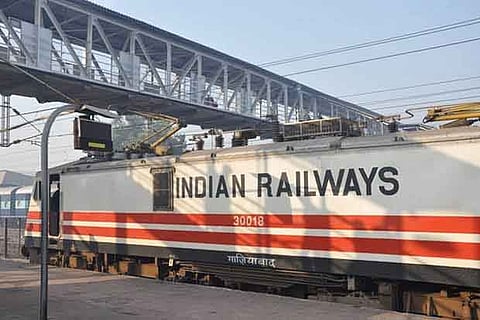

New Delhi
The Indian Railways is carrying out a detailed study on the nearly 4,000 km-long new dedicated freight corridors connecting industrial areas in the eastern and western parts of the country to major ports in Odisha and Andhra Pradesh, Railway Board Chairman V.K. Yadav said on Thursday.
The study will be completed by 2021, he said.
Addressing a virtual press conference, Yadav said that the proposed DFCs are part of the next big infrastructure projects of the national transporter.
Sharing the details of the new dedicated freight corridors, he said: "The survey work for the four new corridors has started and it will be completed by 2021, while the construction of these new corridors is expected to be completed by 2030."
The new corridors are the 1,115-km East Coast corridor from West Bengal's Kharagpur to Andhra Pradesh's Vijayawada, the 1,673 km East-West corridor connecting Bhusaval-Nagpur-Kharagpur-Dankuni (near Kolkata), the 195-km Rajkharswan-Kalipahari-Andal (West Bengal) route, and the 975-km North South sub-corridor Vijayawada-Nagpur-Itarsi (Madhya Pradesh) route.
These corridors will provide connectivity to Paradeep, Dhamra, Gopalpur ports in Odisha and Vishakhapatnam, Gangavaram, Kakinada, Krishnapatnam and Machhalipatanam ports in Andhra Pradesh, ensuring faster movement of goods and capacity enhancement in the over-saturated sections of the railway network.
In a major boost to development of Odisha, the proposed Kharagpur-Vijayawada corridor will pass through the state's Kalinagar Industrial area, connecting it with southern India.
The Kalinagar Industrial area will by then already be connected with the western part of the country through the Eastern Dedicated Freight Corridor.
The industrial area has ferrochrome and alloy industries, sponge iron plants, steel companies like Tata Steel, Neelachal Ispat Nigam Ltd, Mesco Ispat & Steel Ltd, Jindal Stainless Steel Ltd, Yazdani Steel and Power Ltd, Maitan Ispat, among others.
Similarly, Odisha's Angul Industrial area, home to aluminium industries, thermal power plants, a heavy water plant, coal fields and iron and steel plants, will get an impetus with the new East-West corridor, connecting it to the western part of the country as well as the coal belts in the east.
The 3,373 km Eastern and Western DFCs, a flagship project of the railways, aims to augment rail transport capacity to meet the growing requirement of movement of goods by segregating freight from passenger traffic.
The WDFC runs from the Jawaharlal Nehru Port in Mumbai to Tughlakabad and Dadri near Delhi, and will cater largely to the container transport requirements between the existing and emerging ports in Maharashtra, Gujarat and the northern hinterland.
The 1,839 km EDFC runs from Punjab's Ludhiana to Dankuni near Kolkata. It could be extended to serve the new deep-sea port, proposed in the Kolkata area, and will largely handle coal and steel traffic.
The DFCCIL plans to run freight trains on these dedicated corridors at 100 kmph against the current 75 kmph. It also plans to increase the average speed of the freight trains from 26 kmph to 70 kmph on them.
Visit news.dtnext.in to explore our interactive epaper!
Download the DT Next app for more exciting features!
Click here for iOS
Click here for Android